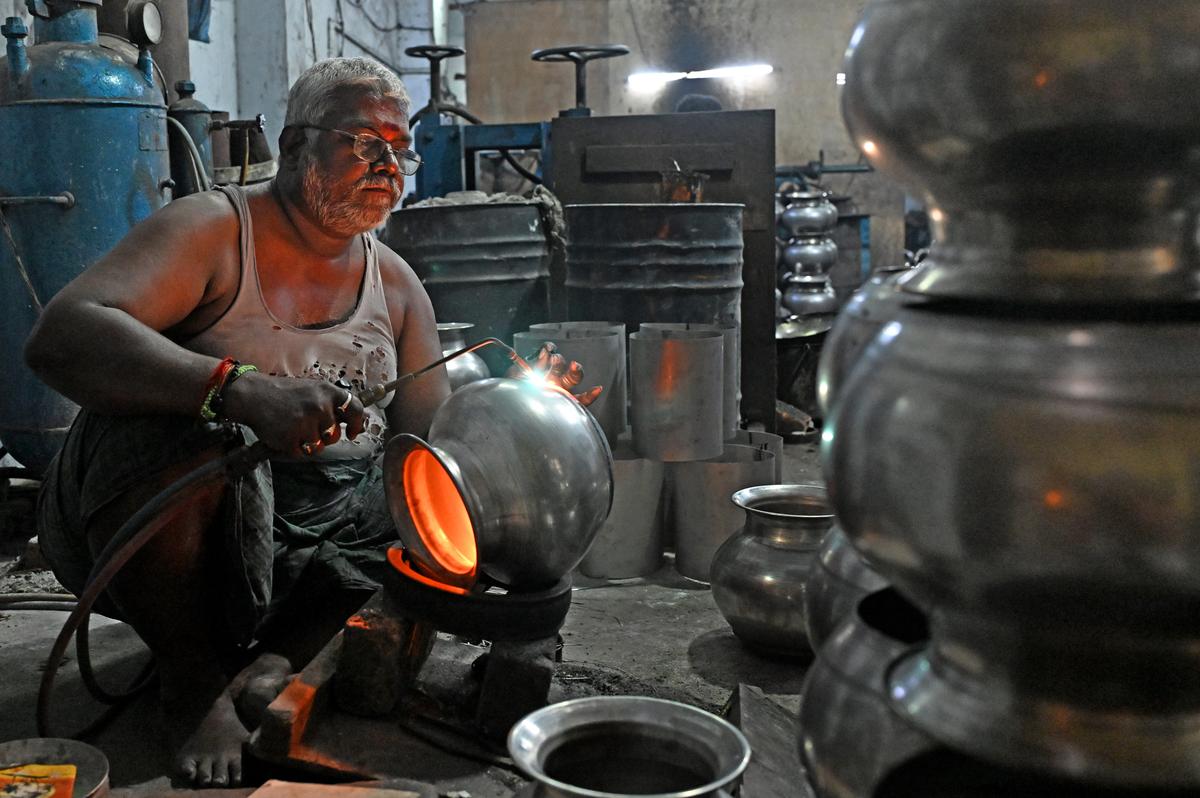Despite several macroeconomic challenges, including geopolitical disruptions, Mahindra & Mahindra Ltd. reported a first-quarter consolidated net profit of ₹4,083 crore representing a 24% rise from ₹3,283 crore a year earlier. During the quarter ended June 30, 2025, the company’s consolidated revenue grew 22% to ₹45,529 crore.
On a standalone basis, the company’s first quarter net profit grew 32% YoY to ₹3,450 crore. Revenue grew 26% to ₹34,143 crore.
The company which was scheduled to declare the quarterly result on Thursday, advanced it by a day due to the sudden demise of its lead Independent Director T.N. Manoharan.
Auto and Farm sector businesses continued to deliver on growth and margins with profits up by 20%, the company said in a filing.
Financial services Asset Under Management (AUM) grew at 15%. Tech Mahindra continued its journey of margin expansion with EBIT improvement of 260 bps. Amongst the company’s ‘growth gems’, Mahindra Logistics showed strong revenue momentum with 14% growth and Mahindra Holidays and Resorts India Ltd has expanded room inventory by 10%.
Anish Shah, Group CEO & Managing Director, M&M Ltd., said, “Q1 F26 has been an excellent quarter, with broad-based growth across all our businesses. The operating excellence in our Auto and Farm businesses is evident in continued market share gains and margin expansion.”
Rajesh Jejurikar, Executive Director & CEO (Auto and Farm Sector), M&M Ltd. said, “Our Auto and Farm businesses continue to lead with strong momentum in Q1 FY26, with gain of 570 bps YoY in SUV revenue share, and 340 bps YoY in LCV ( 3.5T) market share.
“In tractors, we gained 50 bps YoY to reach 45.2% market share, the highest ever in a quarter,” he said.
Amarjyoti Barua, Group Chief Financial Officer, M&M Ltd. said, “We are pleased with the performance of the group in the quarter, despite several macro challenges including geo-political disruptions.”
“It demonstrates the resilience of the group. With our continued focus on capital discipline & operational metrics, we remain committed to shareholder value creation,” he added.
Independent director dead
The company also announced the untimely demise of T.N. Manoharan, the lead Independent Director of the company today on Wednesday (July 30, 2025.)
Mr Manoharan was first appointed as an Independent Director on the Board of Directors of the company with effect from 11th November, 2016 and served as Lead Independent Director with effect from 8th August, 2024.
“On behalf of the entire board and the company, Anand G. Mahindra, Chairman expressed the most profound condolences to his family and placed on record their appreciation for the invaluable contribution and guidance provided by Mr. T.N. Manoharan during his long association with the company,” the company said in a filing with stock exchanges.
“His demise would be an irreparable loss to the company, all the Directors and employees. The Board conveys their deep sympathy, sorrow, and condolences to his family,” the company added.





